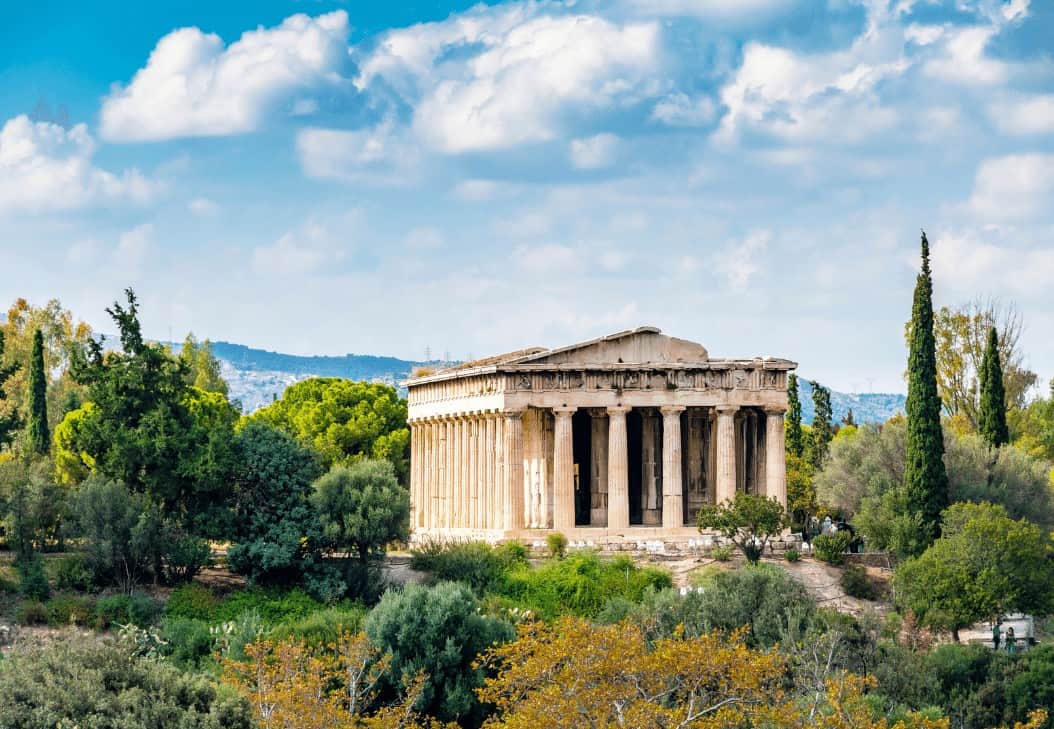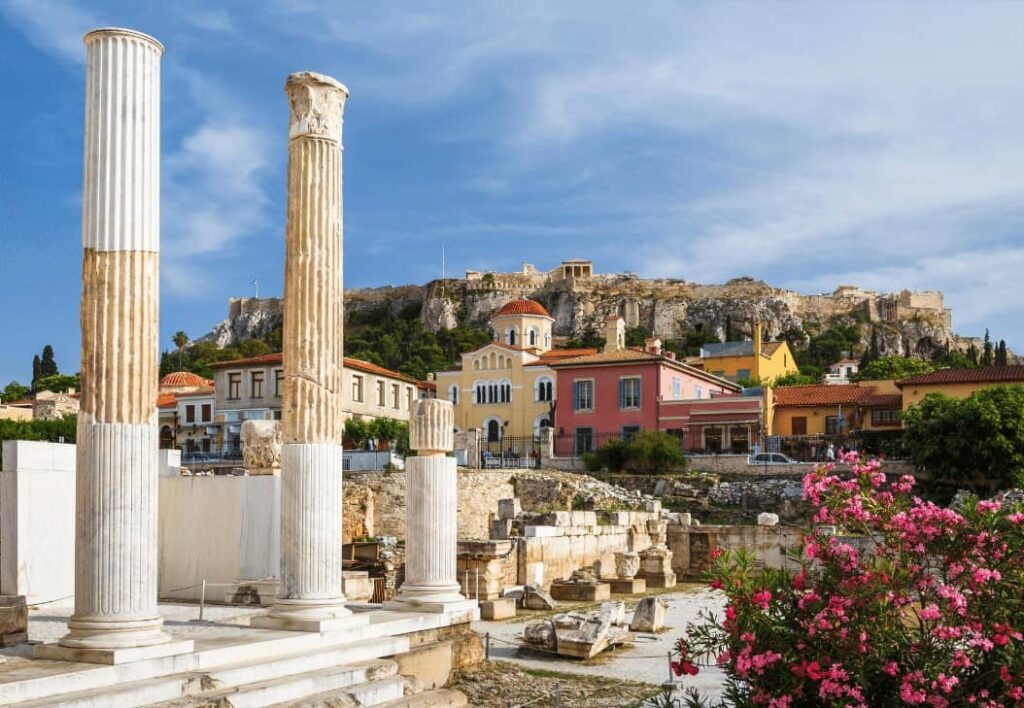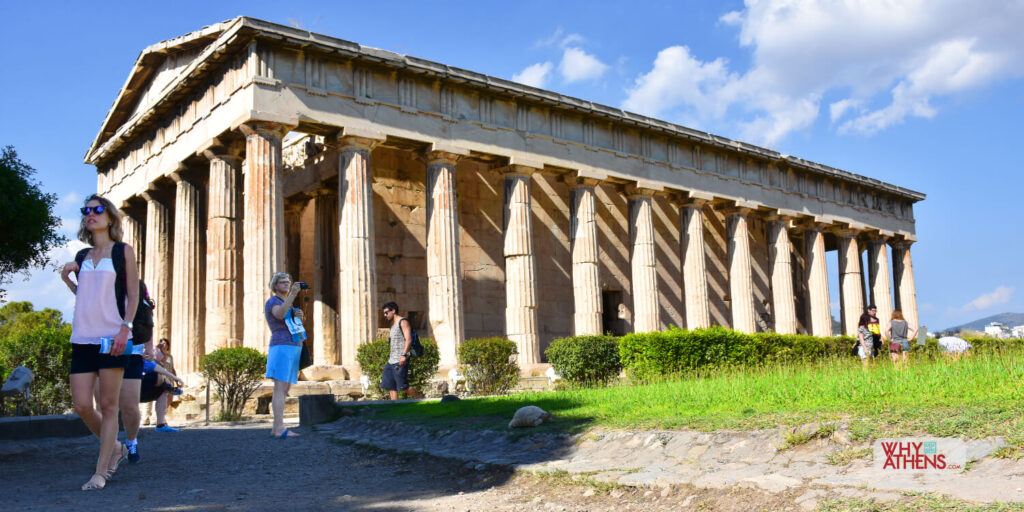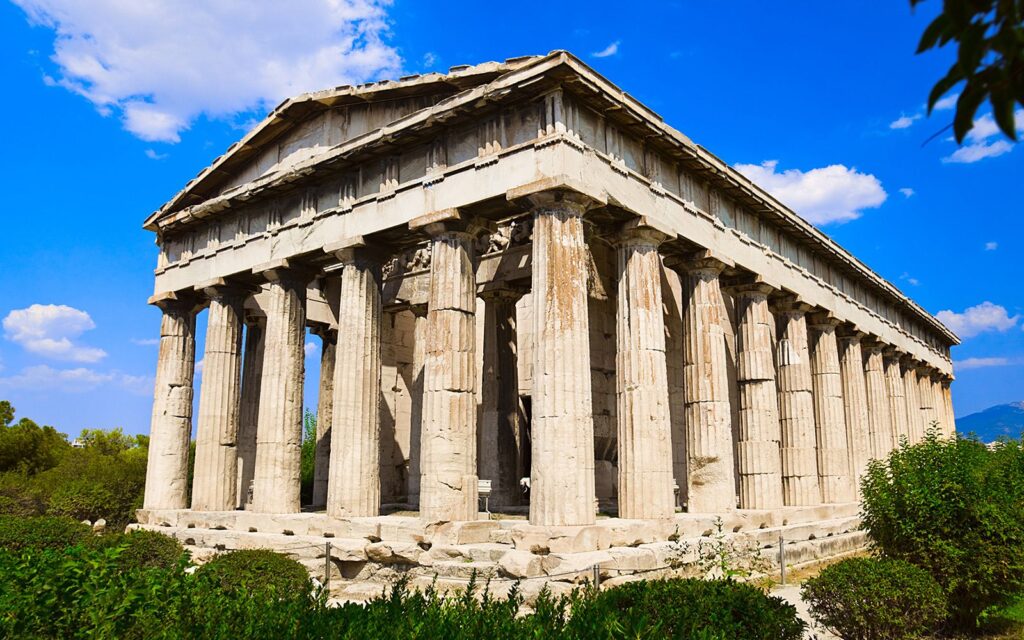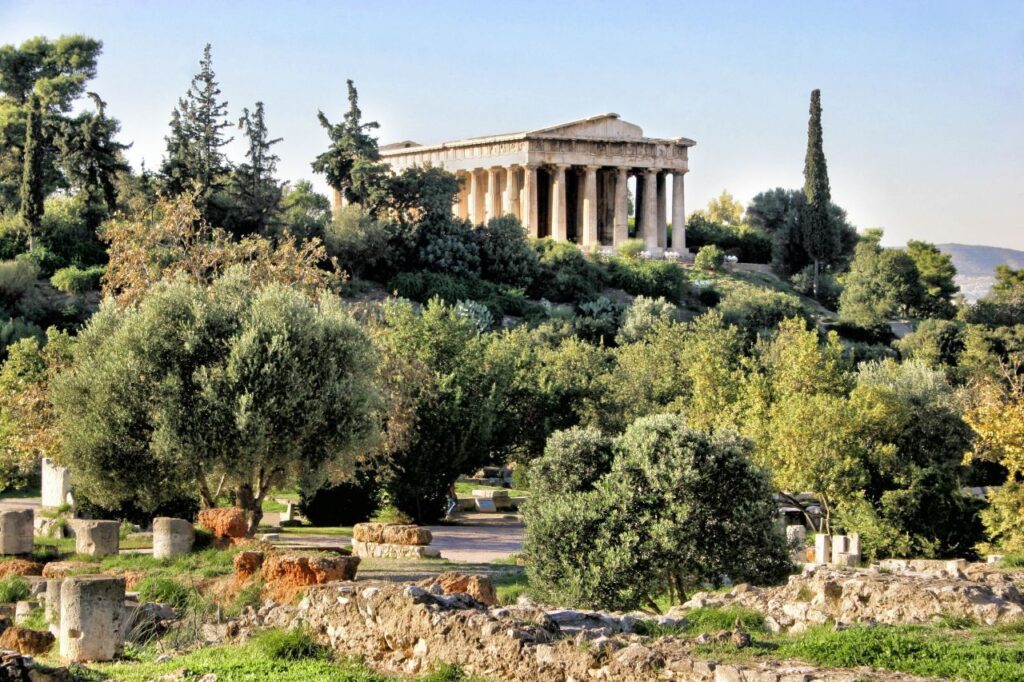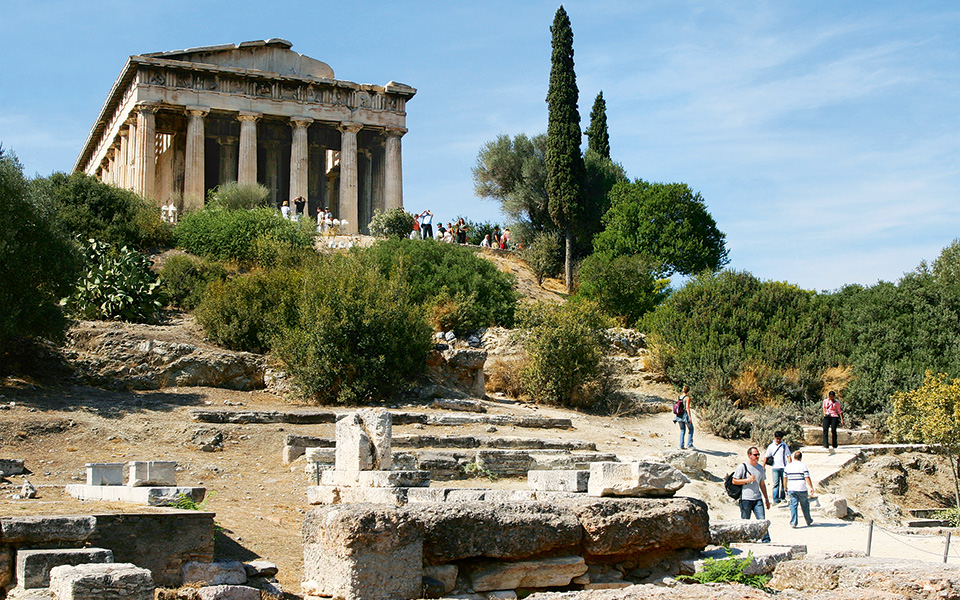The ancient Agora of Athens (also called the Classical Agora) is the best-known example of an ancient Greek agora, located to the northwest of the Acropolis and bounded on the south by the hill of the Areopagus and on the west by the hill known as the Agoraios Kolonos, also called Market Hill.[1] The Agora’s initial use was for a commercial, assembly, or residential gathering place.
Buildings and structures of the classical agora
Plan showing major buildings and structures of the agora of Athens as it was in the 5th century BCE. Number 13 is the Temple of Hephaestus.
- Peristyle Court
- Mint
- South-east Fountain House
- South Stoa I
- Aiakeion
- Strategeion
- Agoraios Kolonos
- Tholos
- Boundary stone
- Monument of the Eponymous Heroes
- Metroon (Old Bouleuterion)
- New Bouleuterion
- Temple of Hephaestus (Hephaestion)
- Temple of Apollo Patroos
- Stoa of Zeus
- Altar of the Twelve Gods
- Stoa Basileios (Royal stoa)
- Temple of Aphrodite Urania
- Stoa Poikile
Excavations
The ancient Athenian agora has been excavated by the American School of Classical Studies at Athens since 1931 under the direction of T. Leslie Shear, Sr. They continue to the present day, now under the direction of John McK Camp.
After the initial phase of excavation, in the 1950s the Hellenistic Stoa of Attalos was reconstructed on the east side of the agora, and today it serves as a museum and as storage and office space for the excavation team.
A virtual reconstruction of the Ancient Agora of Athens has been produced through a collaboration of the American School of Classical Studies at Athens and the Foundation of the Hellenic World, which had various output (3d video, VR real-time dom performance, Google Earth 3d models).
